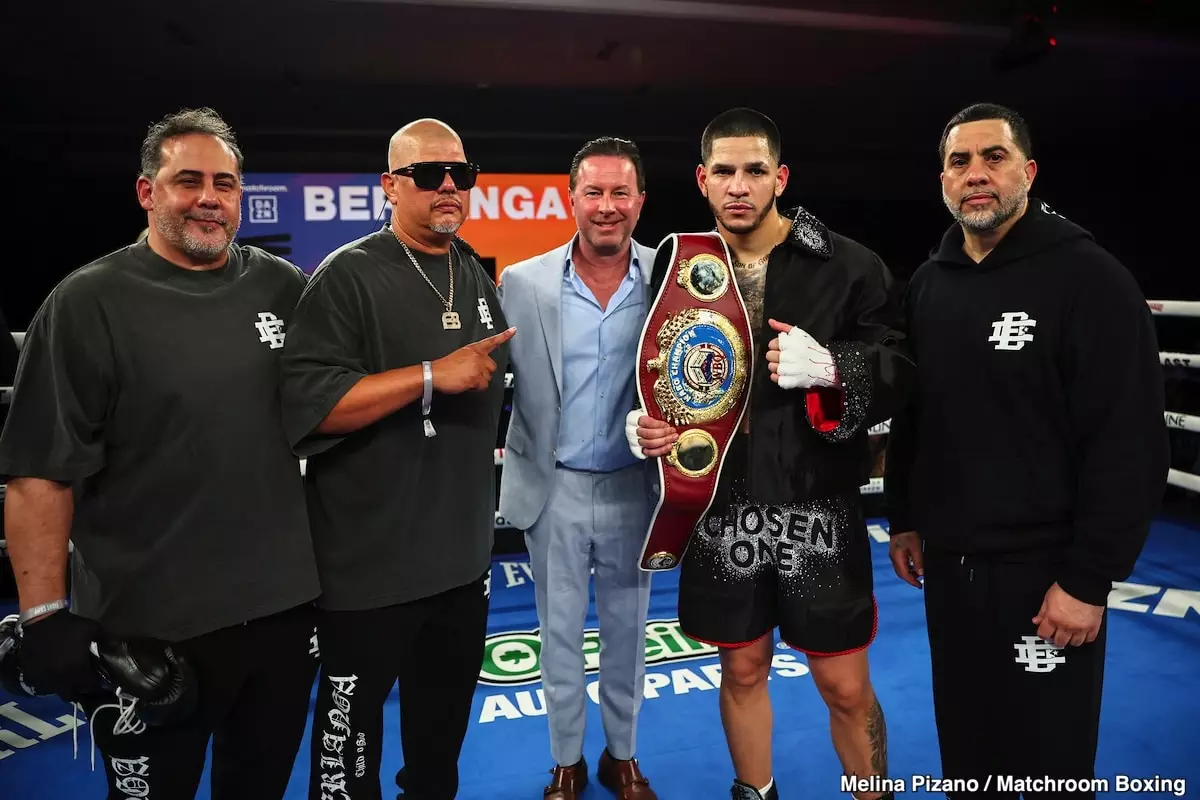The boxing world is buzzing with the announcement from Ring Magazine regarding a unique card set for July 12th in New York City, featuring two co-features: Edgar Berlanga versus Hamzah Sheeraz and Shakur Stevenson opposing William Zepeda. It’s noteworthy that while Stevenson and Zepeda will carry the promotional spotlight leading up to fight night, Berlanga and Sheeraz will ultimately headline the event. This unconventional approach has sparked debates among fans and analysts alike, raising questions about the effectiveness of this format and how it resonates with the audience.
The Art of Promotion: A Double-Edged Sword
Promoters often walk the tightrope of expectation and reality, aiming to sell fight cards while simultaneously nurturing the careers of their fighters. Ring Magazine’s choice to treat the Stevenson-Zepeda bout as the “main event” during fight week could be interpreted as an ingenious marketing ploy—or a sheer miscalculation. It hardly seems fair or logical to build up a fight all week only to switch the emphasis on fight night to a less exciting matchup. Fans might feel duped if they expect a strategic showdown in the main event but instead find themselves watching two fighters lacking substantial accolades in the ring. Berlanga (23-1, 18 KOs) and Sheeraz (21-0-1, 17 KOs) may have respectable records, but a closer look at their competition reveals a lack of significant victories, further compounding this disconnect.
Boxing’s Authenticity in Question
The sporting authenticity of boxing is always under scrutiny, and this intricate dance of promotional theatrics could risk alienating the fan base. Berlanga and Sheeraz are often criticized as products of heavy marketing efforts rather than elite fighting talent. This is particularly poignant in the context of Stevenson and Zepeda’s matchup, which promises a significantly higher skill level, presenting an authentic spectacle that audiences would likely prefer. One wonders why a marketing strategy would lean toward promoting fighters perceived as less skilled, a move that could backfire and result in diminished interest the long run.
The Potential Backlash
By positioning Berlanga and Sheeraz as the headliners while deceiving fans during the lead-up, there lies a risk of enraging a passionate boxing community that values talent over theatrics. After all, boxing is not only about who enters the ring last; it’s ultimately about the fighters’ caliber and their ability to engage in high-stakes competition. If fans feel manipulated and walk away disappointed, it could drive audience fragmentation. Moreover, it raises a crucial question: Are promoters willing to sacrifice the integrity of the sport for short-term financial rewards?
A Fight Card in Limbo
The implications extend beyond just two fighters; they overshadow the rest of the card, which likely features other competitors with notable skills and records. By focusing attention on the less credible match-up, it diminishes the achievements and talents of athletes on the same night who could genuinely captivate an audience. Fans may end up overlooking the brilliance of emerging talents in favor of a lackluster contest that feels unearned.
As this unorthodox fight card approaches, the boxing community finds itself at a crossroads, contemplating whether promotional strategies should take precedence over the sport’s integrity. In a landscape inundated with options and opinions, the lasting question remains: how far can manipulation of fight narratives go before it backfires?


Leave a Reply